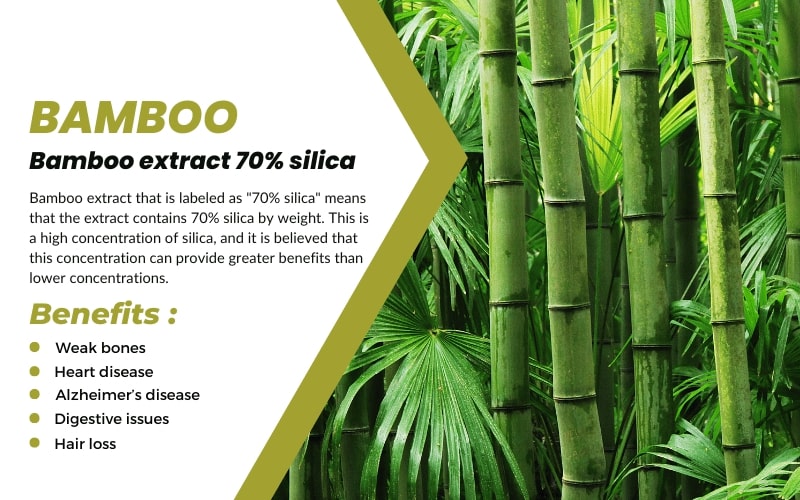What is Bamboo?
In the Ayurveda family, it is a very popular name. Through India commonly known as bamboo (Bambusa vulgaris; Family- Poaceae). Especially in the moist area in India, it is commonly grown. As an herbal drug bamboo has a great platform in the global health care system. The beneficial therapeutic effect of bamboo is scientifically proved. As a flock medicine, it is used in the treatment of cold cough, fever, leprosy. It was scientifically reported that bamboo shows anti-inflammatory activity, anti-ulcer, hypoglycaemic, anticancer, anti-diabetic, anti-microbial activity, and show on.
Phytochemical Constituents
Silica, Lignin, Cellulose and hemicelluloses are reported to be the three most important chemical compositions of plant bamboo. Various bamboo species contains chemical constituents such as flavonoids, phenols, tannins, lignins and polysaccharides. Other characteristic compounds present in bamboo are caffeic acid, orientin, vitexin, p-coumaric acid, isoorientin and chlorogenic acid. Other products like inorganic salts, resins and waxes
Mechanism of Action
The amount of silica you need changes with each life stage. When you’re young, the silica levels in your body are high, contributing to the strength and flexibility of your bones and joints. Silica levels drop, however, as you age, which can affect the body’s ability to maintain adequate levels of collagen. This can lead to joint weakness, increased risk for bone fractures, dry skin, hair loss, and a number of other age-related problems. Silica plays an important role in strengthening your bones by facilitating the deposition of calcium and other minerals into bones, thereby helping to prevent fractures and may reduce the risks of developing osteoporosis whereas is above other parameter, in taking silica increase up the silica level in body and get rid of disease condition.
Clinical Evidence:
- Analgesics Activity:
The extract of the aerial part of Bambusa vulgaris at various doses examined for analgesics activity respectively. In general, the studies show that the aerial component of this plant has significant analgesic potential, which could be due to the presence of saponins and alkaloids in the extract. -
Hepatoprotective activity:
The objective of this research was to see if various Bambusa vulgaris extracts could protect mice whose livers had been damaged by CCl4 (carbon tetrachloride). SGOT (the enzymes serum glutamate oxytransaminase), ALP (alkaline phosphatase) are used to detect liver injury), and SGPT (serum glutamate pyruvate transaminase).The result further confirms the protective effect of liver diseases, as histopathological investigation of mice generated by CCl4 indicates significant necrosis.
Safety
- It should be intake as per recommendation
- 200-500mg per day is the clinical dose for Bamboo intake is safe for long period of time.
Uses:
- Weak bones
- Heart disease
- Alzheimer’s disease
- Digestive issues
- Hair loss





